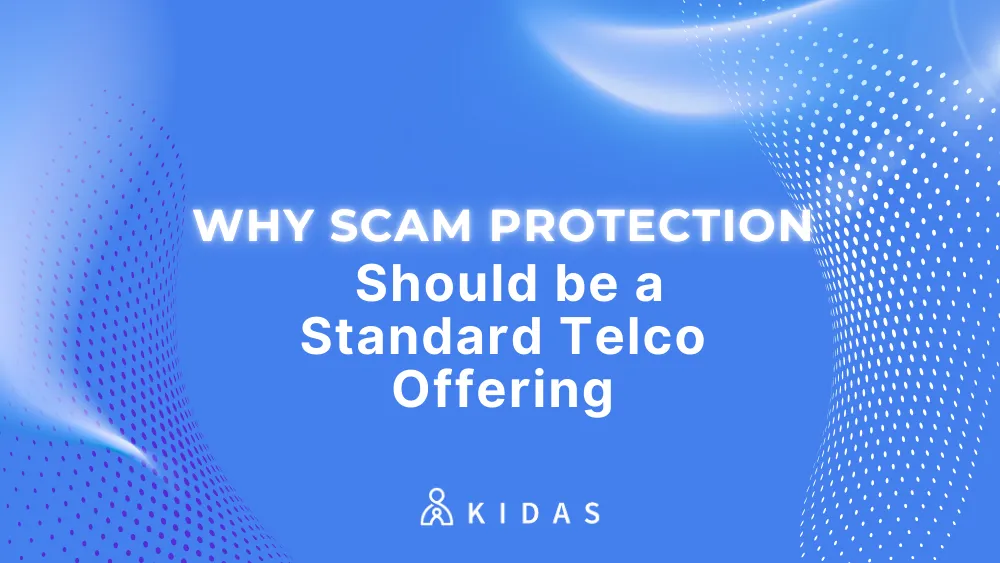Over the last 8 to 1o years, as the use of Smartphones and cheap SMS delivery began to rise which has allowed scams to explode in both scale and sophistication. Americans are bombarded daily with fraudulent texts, phishing emails, and increasingly, deepfake-enabled scams that are hard to distinguish from legitimate communications. It may be difficult for many to remember a time when phones weren’t receiving multiple scam messages daily. These attacks don’t just cost individuals money, they erode trust in digital services, increase pressure on customer support teams, and put telco providers at risk of reputational damage.
The reality is that in this day and age, scam protection can no longer be treated as an optional add-on. It’s time for scam scam protection to become a standard feature of every telco’s offering. This service is almost as essential as the network itself.
The Rising Cost of Scams for Consumers and Telcos
In 2023, Americans reported losing $10 billion to fraud, according to the FTC. This is the highest amount ever recorded and showed a 14% increase from the year before. In addition, phone-related fraud, such as SMS phishing, also known as “smishing”, and phone call scams in particular, are one of the most common categories of fraud. Recent industry reports show scams are the fastest-growing category of cybercrime.
For consumers, the impacts are obvious: financial loss, identity theft and emotional distress are among them, but new threats, like AI-generated voice and video deepfakes are making it even harder for customers to know who to trust.
While the impact is clear for those being targeted, the risks for telcos are just as significant:
- Customer churn when subscribers feel their provider isn’t protecting them.
- Soaring support costs from scam-related inquiries and complaints.
- Reputational risk when fraud is associated with a brand, even indirectly.
When a customer falls victim to a scam received on their device, they don’t blame the fraudster alone, they often blame their provider.
Why Existing Security Bundles Aren’t Enough
Many telcos already offer strong online security suites: credit monitoring, dark web monitoring, VPNs, password managers, and antivirus software. These tools are valuable, but they don’t address the real-time point of engagement with scams, making the gap clear. A customer may have their credit monitored, but that won’t stop them from clicking on a fraudulent text message. A VPN protects browsing activity, but not a deepfake voicemail that convinces someone to transfer money.
Without real-time scam detection, customers remain exposed and carriers put their customer trust at risk.
The Business Case for Scam Protection
Adding scam protection isn’t just about doing the right thing for consumers, it’s a strategic growth opportunity. Let’s look at the 3 R’s: retention, revenue and reputation.
- Retention: Customers who feel protected are less likely to churn, especially in competitive wireless and broadband markets.
- Revenue: Scam protection can be bundled into premium plans or sold as a value-added service, driving incremental ARPU.
- Reputation: Telcos that take visible action against scams position themselves as leaders in customer care and digital trust.
In a crowded marketplace, scam protection offers telcos a clear differentiator that competitors can’t easily replicate without the right technology.
On-Device Scam Protection: A Customer-First Solution
Traditional security tools often require inspecting traffic or collecting personal data, approaches that raise privacy concerns and may not align with regulatory expectations. That’s why on-device scam protection is emerging as the most effective model.
At Kidas, we’ve built an AI-powered scam protection suite that:
- Detects phishing, fraud, and deepfake attempts in real time across SMS, messaging apps, email, and browsers.
- Operates entirely on-device, with no traffic inspection and no data collection.
- Delivers a simple message to customers: “We help you avoid scams before you engage.”
This approach makes scam protection both privacy-preserving and easy to integrate into telco offerings.
Partnering to Deliver Scam Protection at Scale
Telcos don’t need to develop scam protection technology in-house. By partnering with specialized providers, they can deliver this capability quickly and at scale. Integration models range from co-branded apps to value-added bundles within wireless or broadband plans.
At Kidas, we work directly with ISPs and telecom providers to make scam protection seamless, scalable, and market-ready. Together, we can help customers feel safer, strengthen brand trust, and unlock new revenue opportunities.
Conclusion
Scams are the fastest growing cybercrime in the US and that threat isn’t going away anytime soon. In fact, it’s accelerating. For telcos, this is both a challenge and an opportunity. By making scam protection a standard offering, providers can safeguard their customers, reduce churn, and position themselves as trusted leaders in the digital age.
Scam protection isn’t just a feature. It’s the new standard for telecos that want to lead.
Scam protection is no longer optional. It’s the new standard.
If you’re interested in exploring how scam protection could strengthen your offerings, let’s connect.
